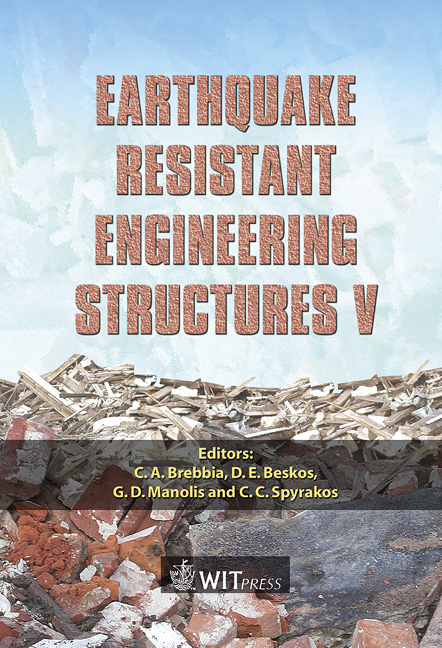Reduction Of Inertial Seismic Forces In Bridges By Using The Abutment Backwall As A \“yielding” Stopper
Price
Free (open access)
Transaction
Volume
81
Pages
14
Published
2005
Size
393 kb
Paper DOI
10.2495/ERES050481
Copyright
WIT Press
Author(s)
S. Mitoulis & J. Tegos
Abstract
The reduction of inertial seismic forces in long bridges, whose decks are mainly supported on piers through bearings, is a major challenge, given the fact that codes require seismic design of these systems using a behaviour factor q equal to 1. The objective of this paper is the investigation of the feasibility of reducing inertial forces through the development of appropriately configured and reinforced abutment backwalls, which play the role of \“yielding” stoppers for seismic action in the longitudinal direction. The reduction of inertial forces contributes to a more economical design of piers, foundations, bearings and terminal joints of the bridge, without reducing the safety requirements. Keywords: bridge, pounding, backwall, earthquake resistant arm, kinetic energy, dissipation, viscous damper. 1 Introduction The present paper applies to all the types of long bridges, either the conventional ones or not, whose deck is either, partially or totally, monolithically connected with the piers, or is \“floating” on bearings, as also, in that case, to precast bridges. As it is already known, the design of long bridges has to satisfy both functional and earthquake resistant requirements, which are conflictful components of the same problem with reverse design demands. \“Floating” systems deal with the problem of functional movements with the use of steel-reinforced elastomeric bearings, which allow the free movement of
Keywords
bridge, pounding, backwall, earthquake resistant arm, kinetic energy, dissipation, viscous damper.





